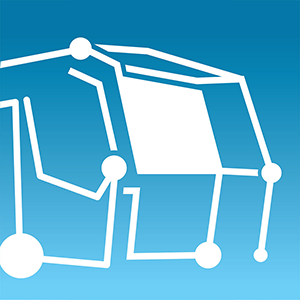
The non-contacting corrugation measuring system identifies defects on the rail surfaces in a wavelength range of 10 to 1000 mm at measuring speeds of up to 300 km/h. No minimum speed is necessary for proper performance. The system makes use of a short three-point asymmetrical measuring chord. The space curve of the absolute longitudinal profile for each rail is calculated from the chord offsets measured every 5 mm.
The measured parameters are:
Three high-resolution optical laser sensors per unit form the basis for the chord measurement. They are arranged in one corrugation measuring unit per rail mounted on the same measuring frame as the track geometry measuring system. This arrangement ensures that the laser sensors are always guided vertically parallel to the rail surfaces. A servo system ensures that the laser measuring positions are always laterally centered over the rail. The measured parameters are transmitted to the on-board computer where they are stored together with the measured track data.